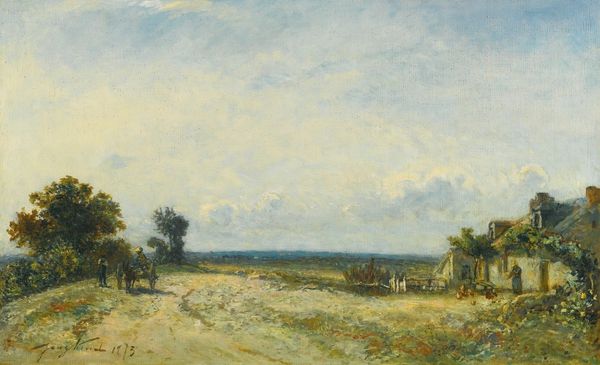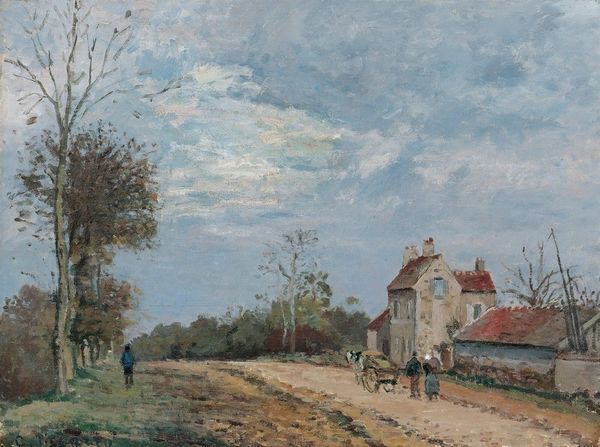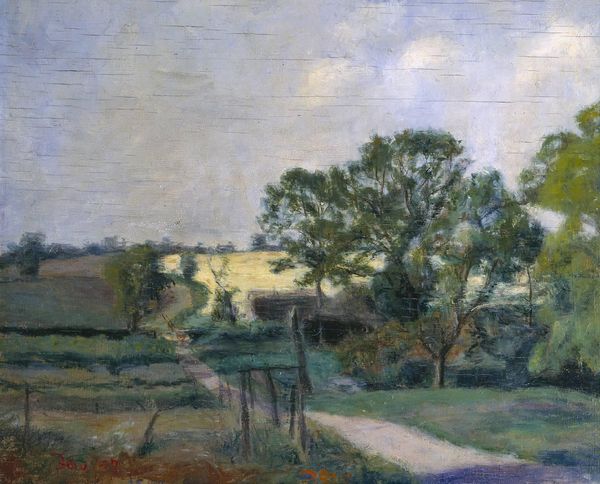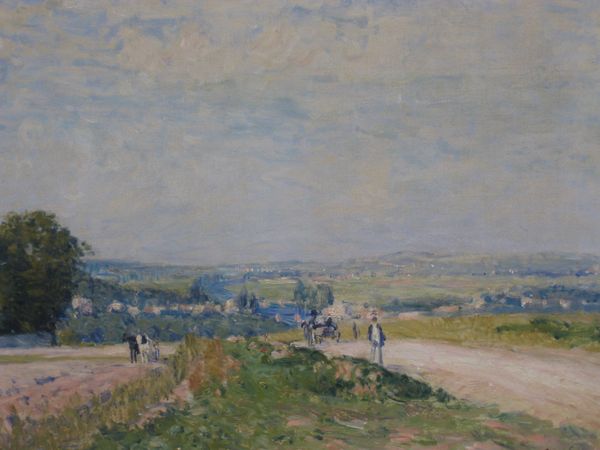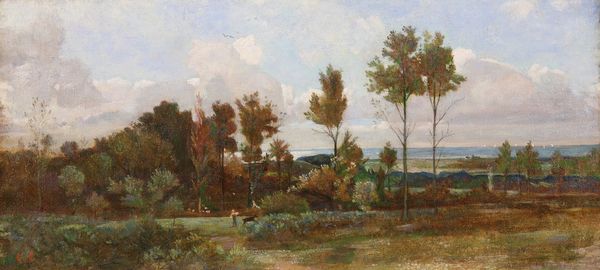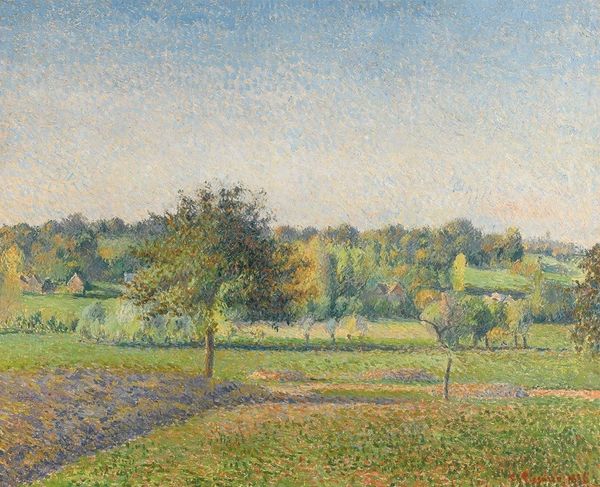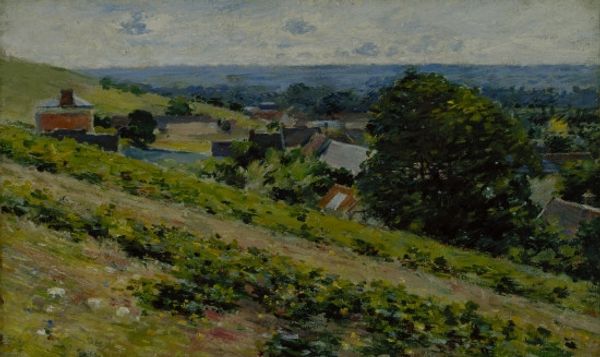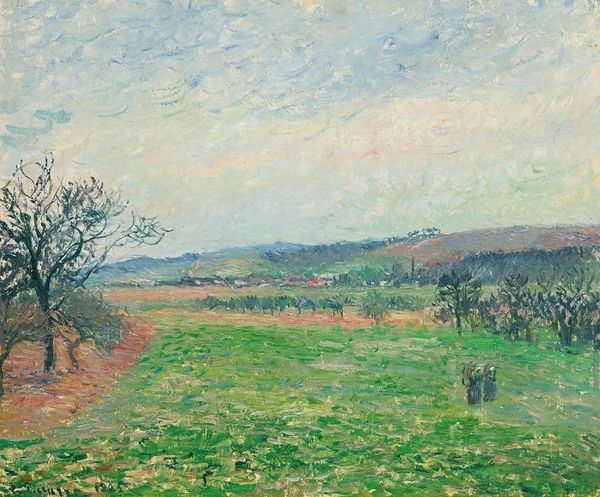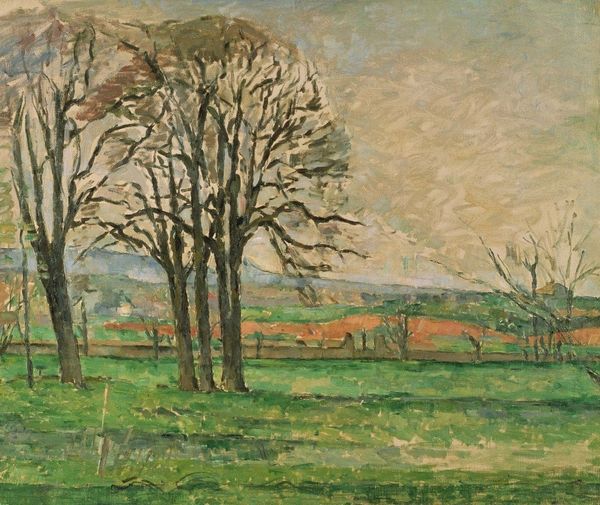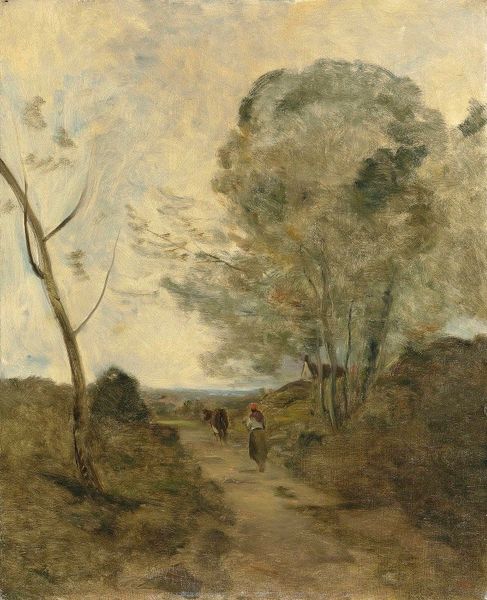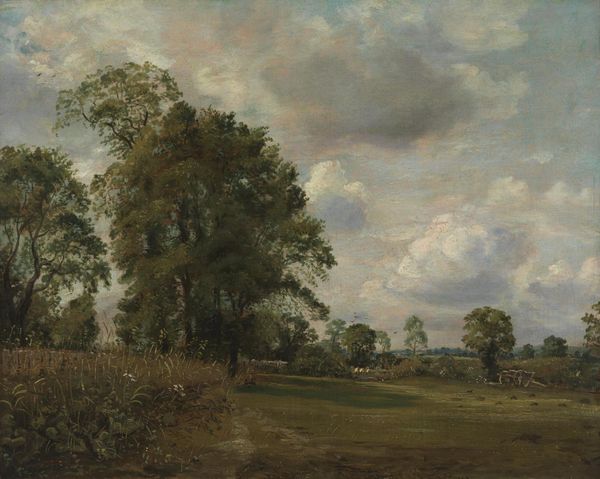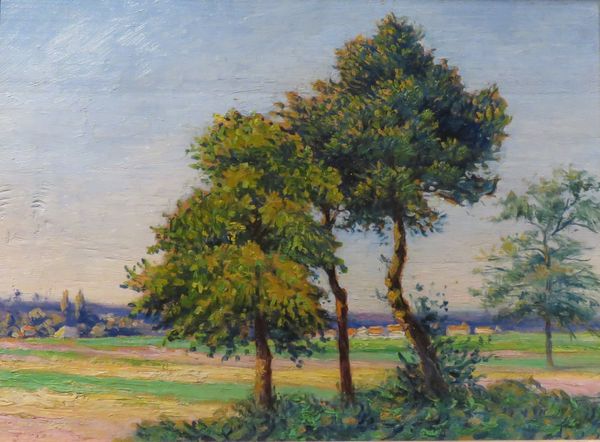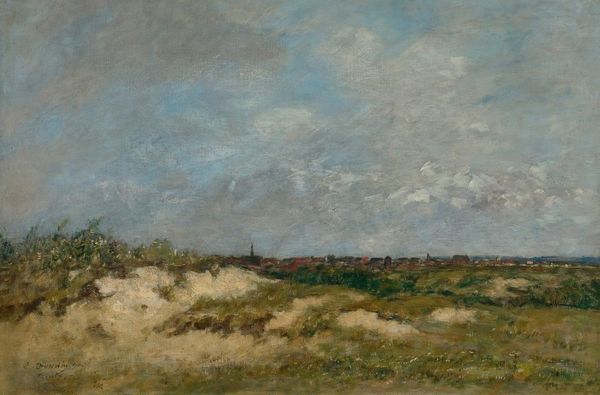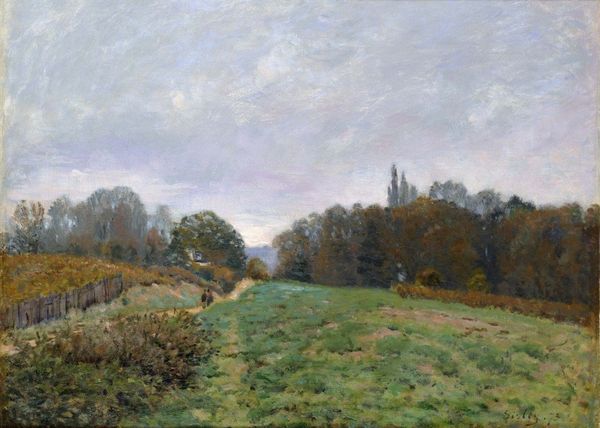
painting, plein-air, oil-paint
#
painting
#
impressionism
#
plein-air
#
oil-paint
#
landscape
#
impressionist landscape
#
figuration
#
nature
#
oil painting
#
genre-painting
Copyright: Public Domain: Artvee
Curator: Camille Pissarro's "Paysage Avec Une Vachère," dating to around 1872, presents a seemingly simple scene—a landscape featuring a cowherd. But Pissarro was rarely simple, was he? Editor: My initial feeling is one of quiet observation, a hushed moment in a vast countryside. The muted palette contributes to this mood, though there's a clear division between the earthy foreground and the expansive sky. The rough texture of the paint application also creates a certain dynamism. Curator: Texture is definitely a crucial element. Notice how Pissarro uses the impasto technique to render not just the foreground's tilled earth, but also the light filtering through the almost bare branches of the trees. Trees, in this context, often symbolize growth, resilience, even a connection to ancestors. This isn’t just a visual depiction, but also a symbolic rootedness. Editor: Yes, the structure is particularly compelling, a horizontal divide across the land. There is an underlying tension that adds significance here; how he uses the brown tilled field, transitioning upwards through layers of green vegetation towards the sky is striking. Pissarro builds a sort of color-based bridge. Curator: Indeed. And consider the positioning of the cowherd, almost dwarfed by the size of the tree and landscape. This highlights humanity's connection to, yet small stature within, the natural world. The pastoral genre at its core asks questions about our place in the agricultural ecosystem. Editor: Right, and note how the figures of the cowherd and animal seem secondary—they become part of a compositional block that serves primarily as a color anchor within the painting's overall organization. See, he almost melts them into the shadow of the tree itself. Curator: Precisely. The painting gently speaks to the agrarian lifestyle and its symbology – of land, livelihood, the daily routines, and a persistent humble existence within an almost biblical connection to nature. The cyclical passing of time. Editor: The work encapsulates a pivotal moment when the formal considerations of Impressionism met a deeply ingrained genre. Curator: A fusion that reminds us to observe not only the art before us, but also its silent narratives. Editor: Indeed. To see is not just to record; it is to engage.
Comments
No comments
Be the first to comment and join the conversation on the ultimate creative platform.
